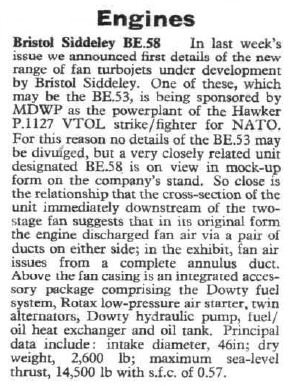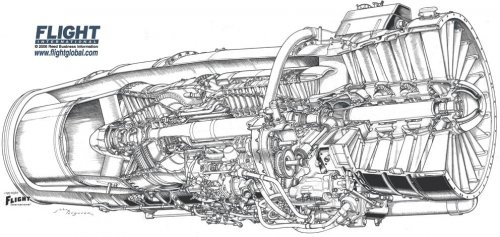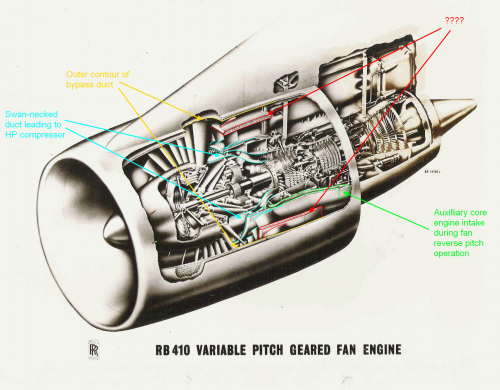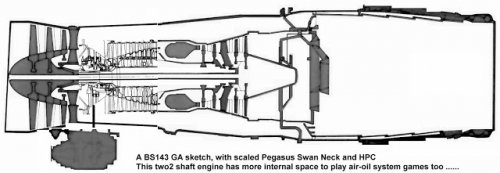- Joined
- 22 April 2012
- Messages
- 2,272
- Reaction score
- 2,036
Bristol Siddeleys efforts at Turbofans have long fascinated me, the company clearly made remarkable progress in its development of the V/STOL pegasus series and the BS.100,but what did with that technology has always puzzled me. So, with some scanning through the flight global I have assembled the following.
From the BE.53 (later the Pegasus) the developed the BE.58 which was essentially a straight-through BE.53, this was then shrunk down to create the BS.75 that ultimately made it to the hardware stage and would have been a logical orpheus replacement.
At the other end of the spectrum Bristol Siddeley undertook a series of studies that led the BS.123 proposal for a turbofan with thrust in the 30-40,000 lb range. Essentially this study was for an engine that would mate the front end of the BS.100 with hot end of the Olympus. The BS.123 was cooperatively studied with SNECMA, at least for a period.
BS.123 data from Aviation Week 1965:
*JFC Fuller guess based on other sources.
From the BE.53 (later the Pegasus) the developed the BE.58 which was essentially a straight-through BE.53, this was then shrunk down to create the BS.75 that ultimately made it to the hardware stage and would have been a logical orpheus replacement.
At the other end of the spectrum Bristol Siddeley undertook a series of studies that led the BS.123 proposal for a turbofan with thrust in the 30-40,000 lb range. Essentially this study was for an engine that would mate the front end of the BS.100 with hot end of the Olympus. The BS.123 was cooperatively studied with SNECMA, at least for a period.
BS.123 data from Aviation Week 1965:
[30-40,000lbs]*...thrust and have a bypass ratio of 3 to 1 and a pressure ratio of 25 to 1. The BS.123 intake diameter is 62 in. and over-all length is 124 in. The two-stage low pressure fan leads into a bypass duct and a 14-stage high pressure compressor.
*JFC Fuller guess based on other sources.
Last edited:









